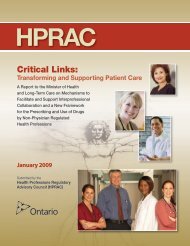No. Description Reference45 In view of the new residency guidelines, which restrict resident work hours, the use of physician assistants (PAs) for patient carecontinuity during off-hours of residents may become a common practice. The purpose of this study was to assess the quality ofpatient care during transition from resident- to PA-assisted trauma program (without residents) and comparative simultaneoussupport. A retrospective analysis of patient care during two six-month segments was carried out: during resident-assisted program ata level II trauma center in 1998 and a PA-dedicated trauma program in 1999. With reinvolvement of senior surgical residents, afocused analysis for the last quarter of 2002 was done. Regression analysis indicated the only statistically significant outcome wasdecreased length of stay (LOS) when patients were transferred directly from emergency center (EC) to floor in 1999. The mean LOSwas 2.54 ± 4.65 compared to 3.4 ± 5.81, and no statistical difference in other assessments was noted. Focused analysis in 2002showed 100% participation of PAs during the trauma alert compared to 51% by residents. Substitution of residents with PAs had noimpact on patient mortality; however, LOS (from EC to floor), was statistically reduced by one day. Trauma programs can benefit withcollaboration of residents and PAs in patient care.46 Objectives: The authors compared complication rates after surgical abortions performed by physician assistants with rates afterabortions performed by physicians. Methods: A two-year prospective cohort study of women undergoing surgically induced abortionwas conducted. All women who underwent an outpatient surgical abortion performed by a physician at the Feminist <strong>Health</strong> Center ofPortsmouth, New Hampshire, or by a physician assistant at the Vermont Women’s <strong>Health</strong> Center in Burlington, Vermont, betweenJuly 1996 and October 1997 were eligible to participate (n=1505). Ninety-one percent of eligible women (1,363) were enrolled; 546received an abortion from a physician assistant, 817 received an abortion from a physician. Complications were defined according toNational Abortion Federation guidelines as follows: a) incomplete abortion; b) failed abortion (continued pregnancy); c)ectopic/extrauterine pregnancy; d) perforation; e) cervical laceration; f) infection; g) hemorrhage; h) other complications, includingshock, coma, amniotic fluid embolism, anesthesia-related difficulties, and death. Complications were further classified as eitherimmediate or delayed. Immediate complications were defined as those that occurred during the procedure or before discharge fromthe clinic. Delayed complications were those that occurred up to two weeks after discharge. Complication categories are not mutuallyexclusive. Results: Total complication rates were 22.0 per 1,000 procedures (95% confidence interval [CI]=11.9, 39.2) performed byphysician assistants and 23.3 per 1,000 procedures (95% CI=14.5, 36.8) performed by physicians, a difference that was notstatistically significant (P=.88). A total of 37 complications were reported from 31 procedures (12 by Vermont physician assistants and19 by New Hampshire physicians). Five Vermont women and one New Hampshire woman experienced more than one complication.The most common complication that occurred during physician assistant–performed procedures was incomplete abortion; duringphysician-performed procedures the most common complication was infection not requiring hospitalization. A history of pelvicinflammatory disease was associated with an increased risk of total complications (odds ratio=2.1; 95% CI=1.1, 4.1).Conclusions:Surgical abortion services provided by experienced physician assistants were comparable in safety and efficacy to those provided byphysicians. The authors conclude that these results support the idea that a potential solution to the shortage of providers would be toexpand the training of physician assistants to include surgical abortion, thereby enhancing the ability of the medical community toprovide needed reproductive health services to women.Oswanski, M., F., Sharma, O.,P. & Raj, S. S. (2004).Comparative review of use ofphysician assistants in a level Itrauma centre. The AmericanSurgeon, 70(3), 272-279.Goldman, M. B., Occhiuto, J.S., Peterson, L. E., Zapka, J.G. & Palmer, R. H. (2004).<strong>Physician</strong> assistants asproviders of surgically inducedabortion services. AmericanJournal of Public <strong>Health</strong>, 94,1352-1357.Page 55 of 74
No. Description Reference47 Non-physician clinicians have become prominent providers of patient services within the practice of medicine. They include nursepractitioners and clinical nurse specialists, physician assistants, the alternative and complementary disciplines (chiropractic,naturopathy and acupuncture), mental health providers (psychologists, clinical social workers, counsellors and therapists) andspecialty disciplines (optometrists, podiatrists, nurse anaesthetists and nurse–midwives). Although these various disciplines havediffering histories and philosophic frameworks, which create distinctive approaches to patient care, they have shared a struggle toobtain recognition and autonomy through state licensure, to expand their state-granted practice prerogatives and to achieve broaderreimbursement from third-party payers and managed care. Most entered into a growth spurt beginning in the early 1990s. All nowprovide care that not only overlaps that of physicians but that complements and supplements that care. Although PAs must alwayswork under the delegated authority of a physician, most states allow them to practise within a radius of 50 miles or a one-hour drivefrom the supervising physician, as long as the opportunity for telephone contact is maintained. Moreover, the required frequency ofdirect contact with a physician varies from daily in most states to weekly in 12 states and 30-day intervals in seven. In three states,physicians are required to review only 10–15% of the PA’s charts. The central question is, how does their care contribute to quality?The evidence thus far shows that non-physician clinicians throughout the range of disciplines can produce high-quality outcomesunder particular circumstances. However, the strongest body of evidence is derived from care that is at the least complex end of theclinical spectrum or that is provided under the umbrella of physicians. Unfortunately, few studies have critically examined theoutcomes of non-physician clinicians at the leading edge of their practice prerogatives and under conditions that are free of physicianoversight. Thus, while the principle that they can deliver high quality care within the practice of medicine is unequivocally true, moreresearch is needed to test this principle under conditions of greater clinical complexity and autonomy, and, pending the results ofsuch research, caution must be exercised in applying this principle too broadly.Cooper, R., & Stoflet, S.(2004). Diversity andconsistency: The challenge ofmaintaining quality in amultidisciplinary workforce.Journal of <strong>Health</strong> ServicesResearch and Policy, 9(Suppl.1), 39-47.Page 56 of 74
















